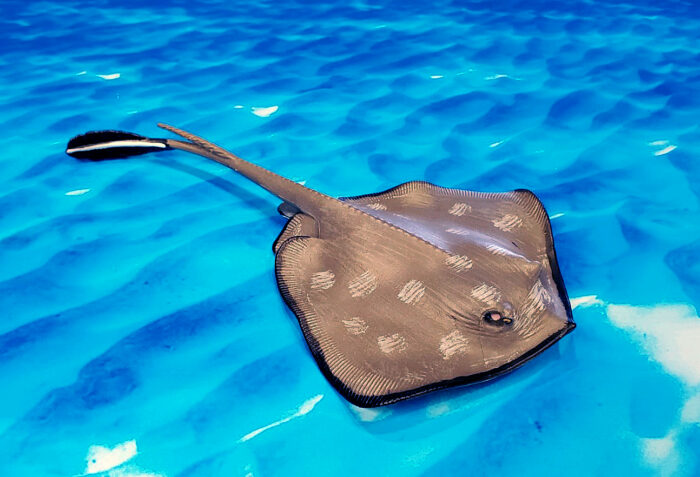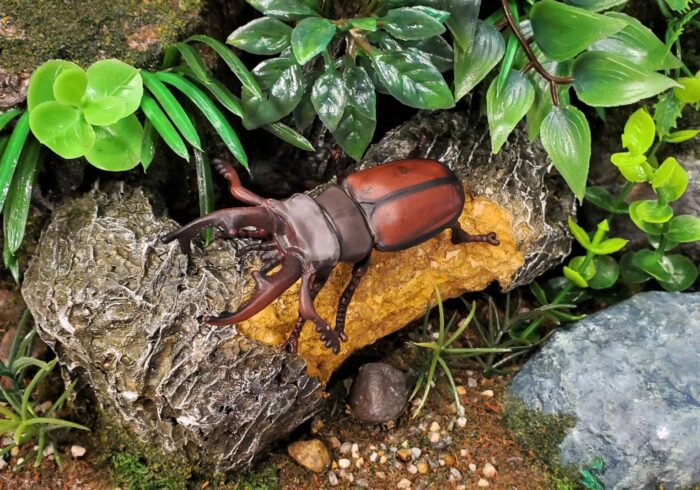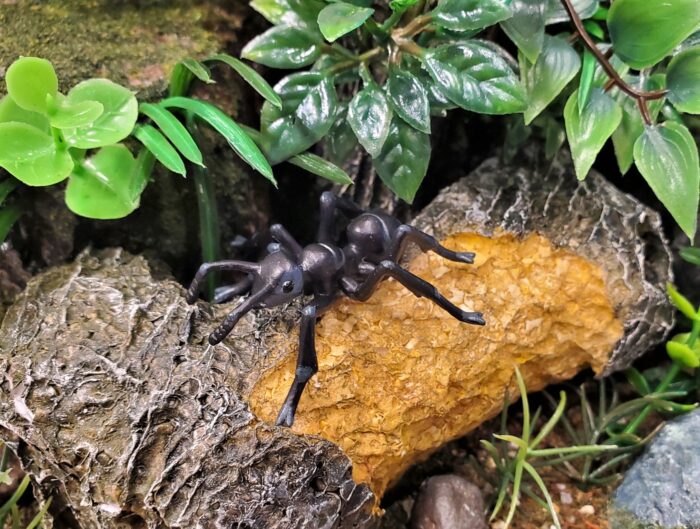Walk-around of the California spiny lobster, Panulirus interruptus (Randall, 1840) by Safari LTD, Incredible Creatures, released in 2018. The figure is not marketed at the species level, but given its morphology, color, and that it was originally hinted at being North American, P. interruptus is the most-likely candidate.
Author: bmathison1972
 I am Blaine, known by bmathison1972 on the forums and blogs. I am a professional parasitologist specializing in agents of human disease, including medically-important arthropods. I am also an amateur entomologist and study Nearctic click beetles (family Elateridae). Historically, much of my collection was devoted to insects and other arthropods, but in late 2018 I started building a Synoptic Collection of other species, to have one good exemplar of any animal species (my personal ‘Natural History Museum’). Other hobbies include hiking, bird-watching, running, and lifting weights, but my other ‘big’ hobby is visiting sports arenas, especially baseball stadiums. Whenever I travel for work (which I do with some frequency), I always check to see if there is a local college, independent, minor, or major league team to see.
I am Blaine, known by bmathison1972 on the forums and blogs. I am a professional parasitologist specializing in agents of human disease, including medically-important arthropods. I am also an amateur entomologist and study Nearctic click beetles (family Elateridae). Historically, much of my collection was devoted to insects and other arthropods, but in late 2018 I started building a Synoptic Collection of other species, to have one good exemplar of any animal species (my personal ‘Natural History Museum’). Other hobbies include hiking, bird-watching, running, and lifting weights, but my other ‘big’ hobby is visiting sports arenas, especially baseball stadiums. Whenever I travel for work (which I do with some frequency), I always check to see if there is a local college, independent, minor, or major league team to see.All reviews by this author
Goliath Beetle (3D File: Ladybugs & Cetoniinae by Stasto)

For today’s review we will be looking at the Goliath beetle (Goliathus goliatus) by Stasto 3D File in the 2022 collection, Ladybugs Cetoniinae. Unlike most blogposts, which focus on the animal and the figure itself, I am going to focus on how the figure is packaged and assembled (especially since I recently reviewed this species).
Blue-ringed Octopus (Water World by Bullyland)
Stingray (Incredible Creatures by Safari Ltd.)

Today’s Shark Week review is going to cover the stingray that was produced by Safari Ltd. in 2020 as part of their Incredible Creatures line. I know, I know, stingrays are not technically sharks, but here at the Animal Toy Blog we celebrate all kinds of cartilaginous critters during Shark Week!
Goliath Beetle (Diversity of Life on Earth: Beetles Vol. 3 by Bandai)
Honey Bee (Incredible Creatures by Safari Ltd.)

Walk around of the honey bee, Apis mellifera Linnaeus, 1758 by Safari LTD for their Incredible Creatures line, originally released in 2006. What is surprising about this figure is that it is the ONLY insect to ever be released in the Incredible Creatures line, and it would be the only terrestrial arthropod if not for the recent sinking of the old Hidden Kingdom line into the IC line (of course, the only remaining figures in that line are the monarch, black widow, orange-kneed tarantula, and revamped scorpion).
Jewel Beetle (Puripura by Model Innovative Creation)

Chrysochroa fulgidissima is a colorful metallic wood-boring beetle (family Buprestidae) from Japan. It goes by Yamato tamamushi in Japanese which roughly translates to ‘jewel beetle’. Historically, it was believed to be more widespread in Southeast Asia, but populations from Korea, China, and Vietnam have been described as new species.
Flea (Hidden Kingdom Smithsonian Insects by Safari Ltd.)

Fleas are one of the most medically important groups of arthropods, probably only second to ticks and mosquitoes. They are vectors for many disease-causing agents, including those that cause plague, feline rickettsiae, and endemic typhus, and can serve as intermediate hosts for a few tapeworms. The Oriental rat flea, Xenopsylla cheopis, was a driving force in the spread of the Black Death pandemic in the 1300s.
European Stag Beetle (Wild Animals by Papo)

The European stag beetle, Lucanus cervus, is an iconic insect of the European hardwood forests. Unfortunately, its numbers dropped in the 20th Century due to modern forestry, which removed dead oak and beech trees required for larval development. The beetle gets its Latin epithet, cervus, and its common name ‘stag beetle’ after Cervus elaphus (red deer), as the mandibles of a major male are reminiscent of the antlers of a red deer stag.
Bullock’s Nudibranch (Incredible Creatures by Safari Ltd.)

Bullock’s nudibranch (Hypselodoris bullockii) is a colorful and familiar sea slug from the Indo-Pacific region. They are benthic in nature and are often associated with coral reefs. It turns out, many historical records of H. bullockii are incorrect, due to morphologic confusion with other species in the bullockii-complex.
Bee Hummingbird, pair (1/1 Bee Hummingbirds by SO-TA)

The bee hummingbird (Mellisuga helenae) is the world’s small extant bird, possibly the smallest bird ever known (but I am not up-to-date on the full extent of the avian fossil record). It is endemic to Cuba and its surrounding islands, especially the Zapata swamp in the eastern part of the island.
Ant (Wild Animals by Papo)

One bright day in late autumn a family of ants were bustling about in the warm sunshine, drying out the grain they had stored up during the summer, when a starving grasshopper, his fiddle under his arm, came up and humbly begged for a bite to eat.
“What!” cried the ants in surprise, “haven’t you stored anything away for the winter?






